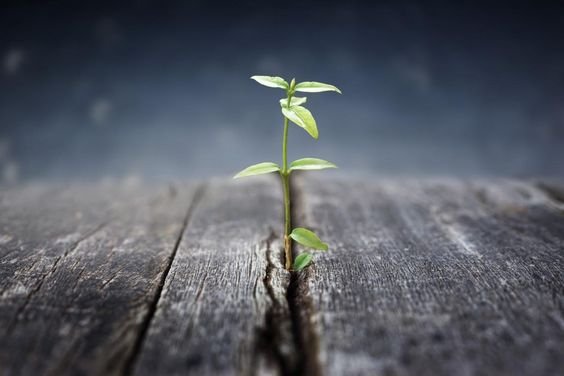When many people think of growing their own food at home, their minds leap immediately to growing typical annual crops in a vegetable garden. In fact, there are many benefits to embracing perennial food sources.
Perennials are simply plants that grow in your garden over a number of years. Biennial plants live over two years. Perennials endure for longer and may often remain in place for many years. Annuals (or plants treated as annuals in a vegetable garden) grow, set seed, and die, or are removed in a single season.
When we talk about perennials, sometimes we are only referring to the group of plants known as herbaceous perennials. But technically, perennials are a group that also includes trees, shrubs, and sub-shrubs, too.

Perennial Food Sources
Perennial food sources include:
Fruit trees
Nut trees
Trees with edible leaves
Fruit and berry bushes
Fruiting canes and climbers
Perennial soft fruits like strawberries
Perennial vegetables
Perennial herbs and spices
Edible flowers
By embracing perennial edibles that are native or that grow well where we live, we can derive a range of benefits to ourselves, the wildlife that shares our space, and the wider world.
Whether in a garden or on a farm, perennial food production is an alternative to annual production methods which can deplete the soil and take a lot of hard work. Embracing perennials is one way to work more with nature, rather than fighting it.
Perennial food production can, among other things:
Sequester more carbon and help us tackle our climate crisis.
Boost biodiversity and aid and welcome local wildlife.
Protect and nurture the soil, creating functioning ecosystems that thrive long-term.
Create closed-loop, low-maintenance systems that require, once established, no outside input from us.
Provide natural abundance, providing us not only with food but also with a range of other yields.
Well-designed perennial food-producing systems are, in many ways, the answer to questions over how we can meet our own human needs in a more sustainable and eco-friendly way.
Depending on the specifics of the site and situation, and the plants chosen for a perennial planting scheme, embracing perennials can also help you to manage water more wisely on your property. Perennial plants can be crucial to create ecosystem function and to aid the function of water management features within a landscape.
Selection of specific native perennial plants can allow you create a food-producing system in a garden or on a farm that is better suited to the environment in an area. So, when thinking about creating a perennial growing scheme, learning more about the perennials native to your area could be a good place to begin.
While some perennial edible plants are not as familiar to us in our daily diets as common annual crops, learning to eat a little differently can allow us to withdraw our support from damaging systems.
Ideas for Perennial Food Production
There are few hard and fast rules about what a perennial food-producing system needs to look like, nor about which plants it should contain. But there are certain schemes that can work very well within sustainable gardening or farming systems. For example, in a garden you might create:
Food forests or forest gardens
Smaller fruit trees and guilds
Fruiting hedgerows or boundary schemes
Beautiful “edimental” (edible and ornamental) perennial beds or borders
Dedicated perennial vegetable and/or herb gardens
Producing food within perennial systems need not be a huge undertaking. Even on a small scale, anyone with even a little growing space can give it a go.
Even in a small container garden you might grow strawberries, perennial alliums (onion family plants), perennial brassicas (cabbage family plants), and much more. Fruit bushes, and even dwarf fruit trees, can also often be grown in larger pots.
On larger properties or farms, larger food forests or other agroforestry schemes might be created using mostly perennial plants. And larger fruiting hedgerows or edible windbreak hedgerows might be established.
Perennial vegetables might even take the place of annual crops and, in future, we may even have perennial grains to replace our staple annual grain crops—though that is likely still some way off.








